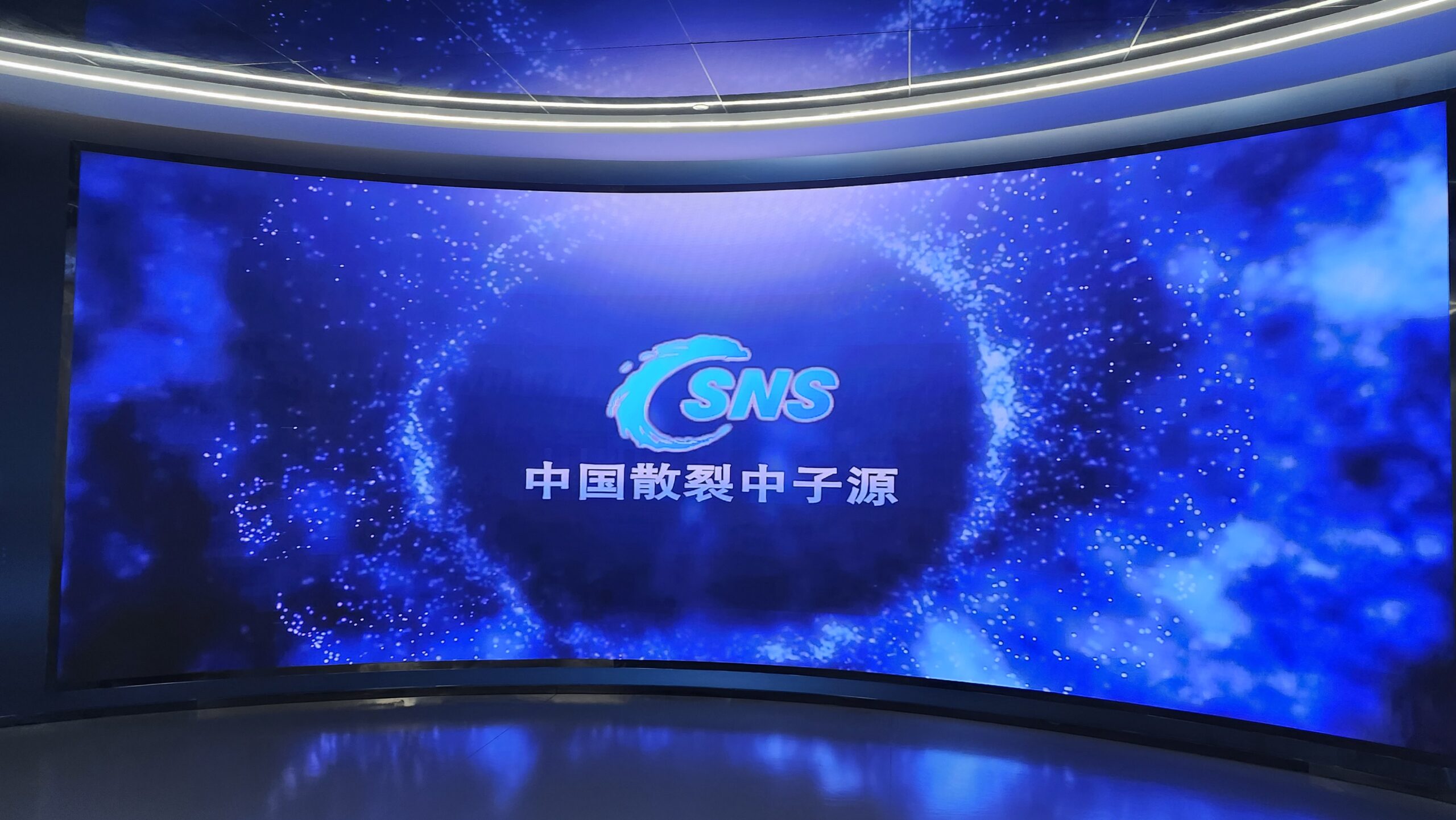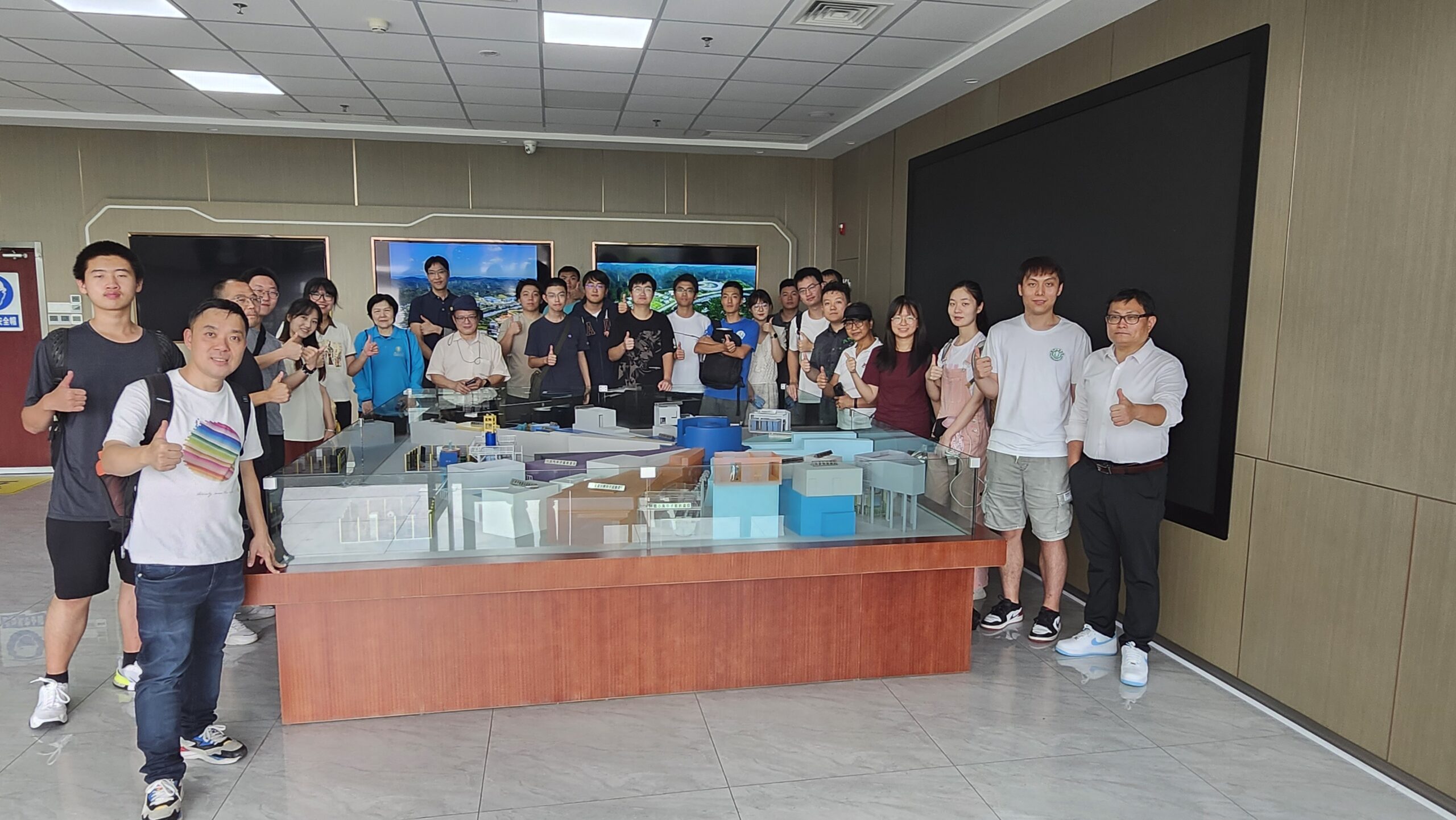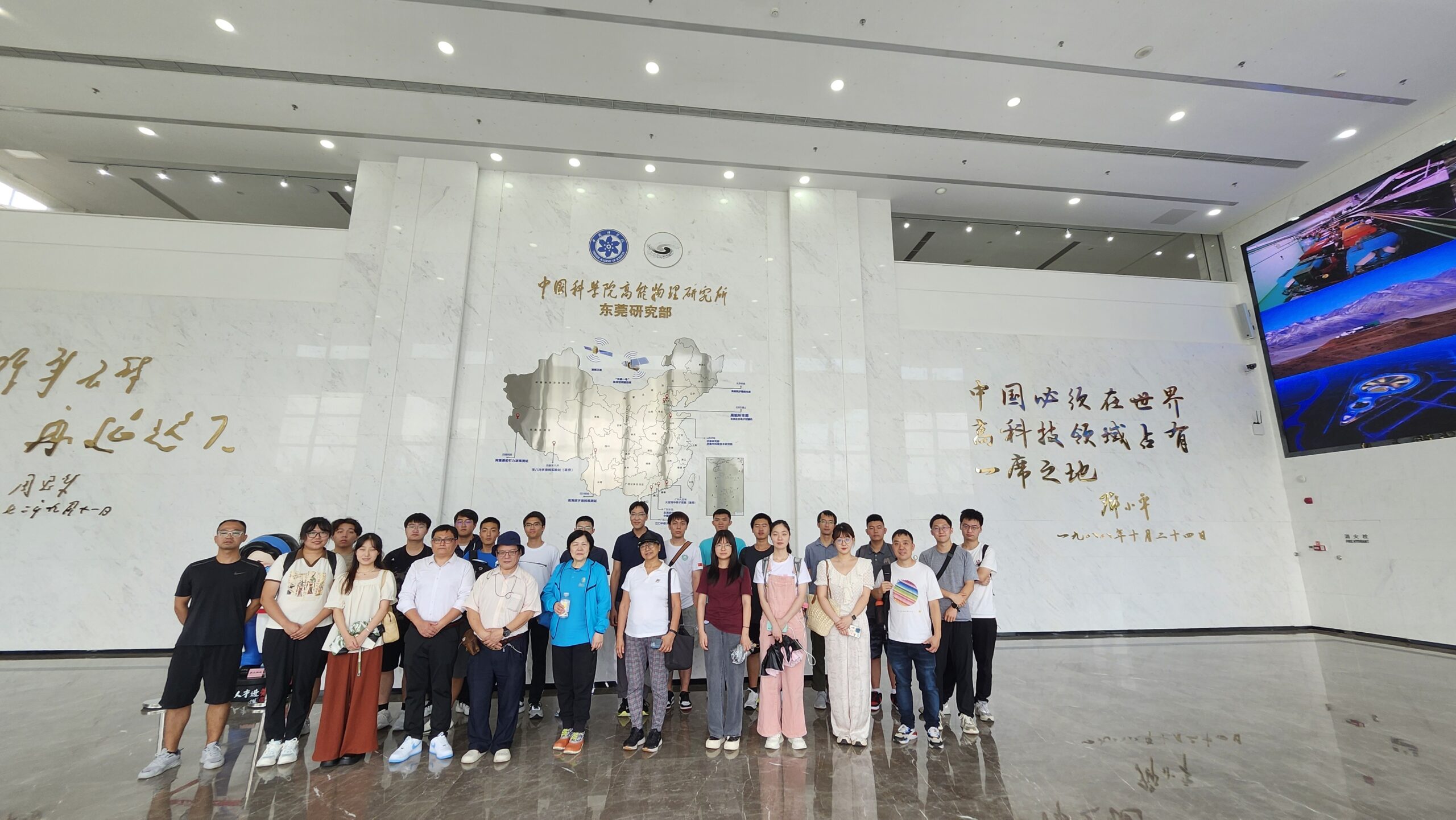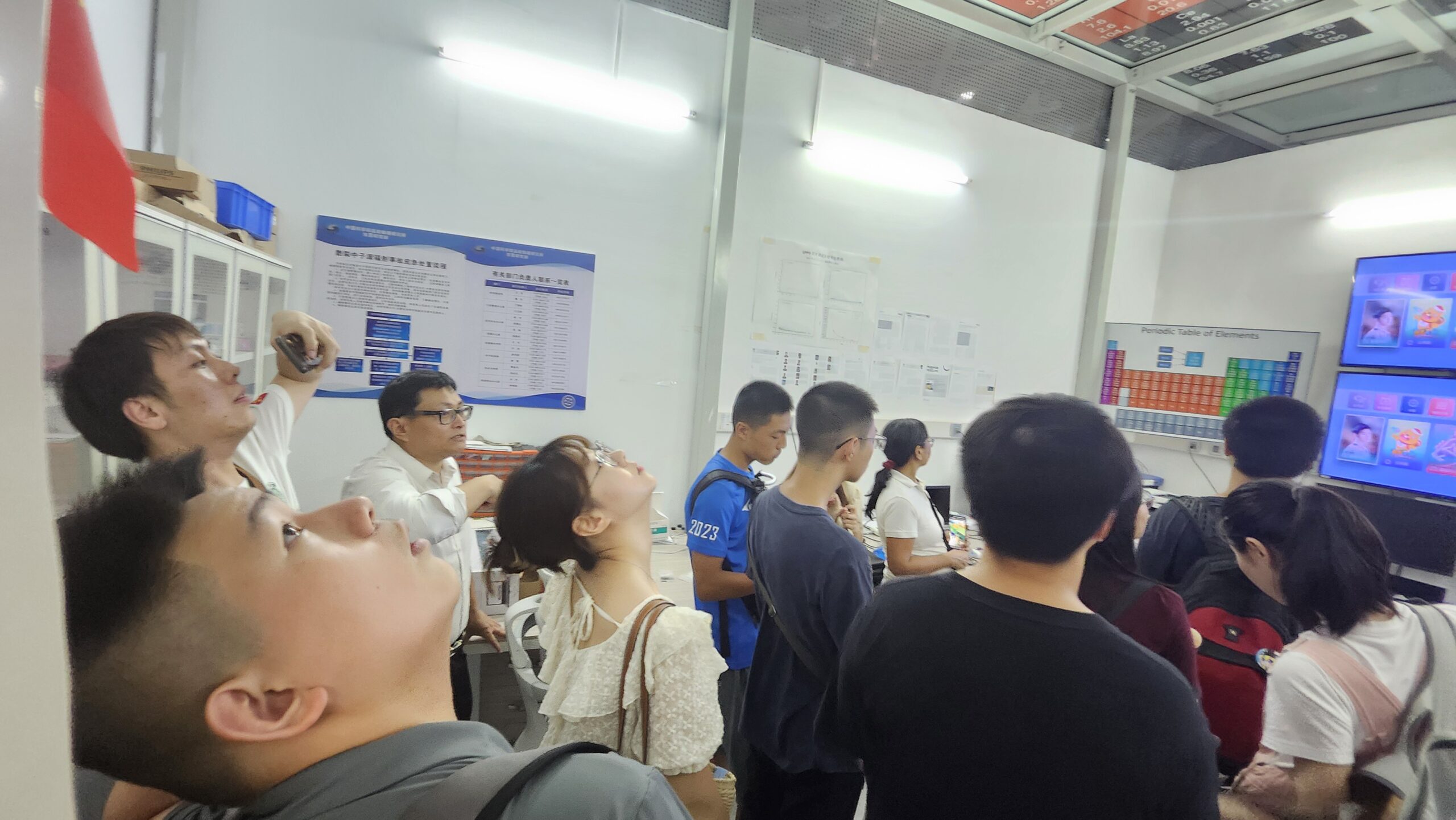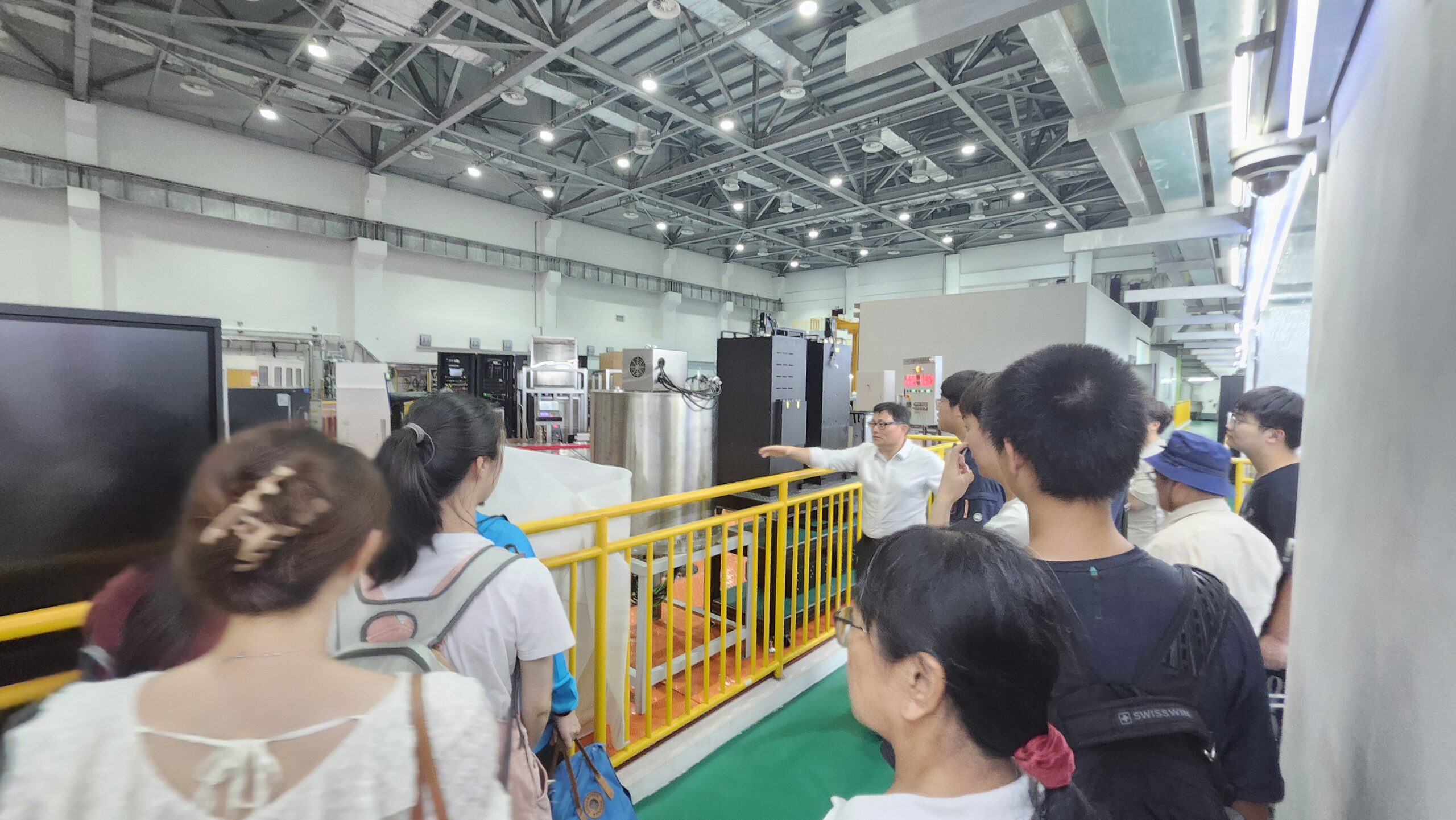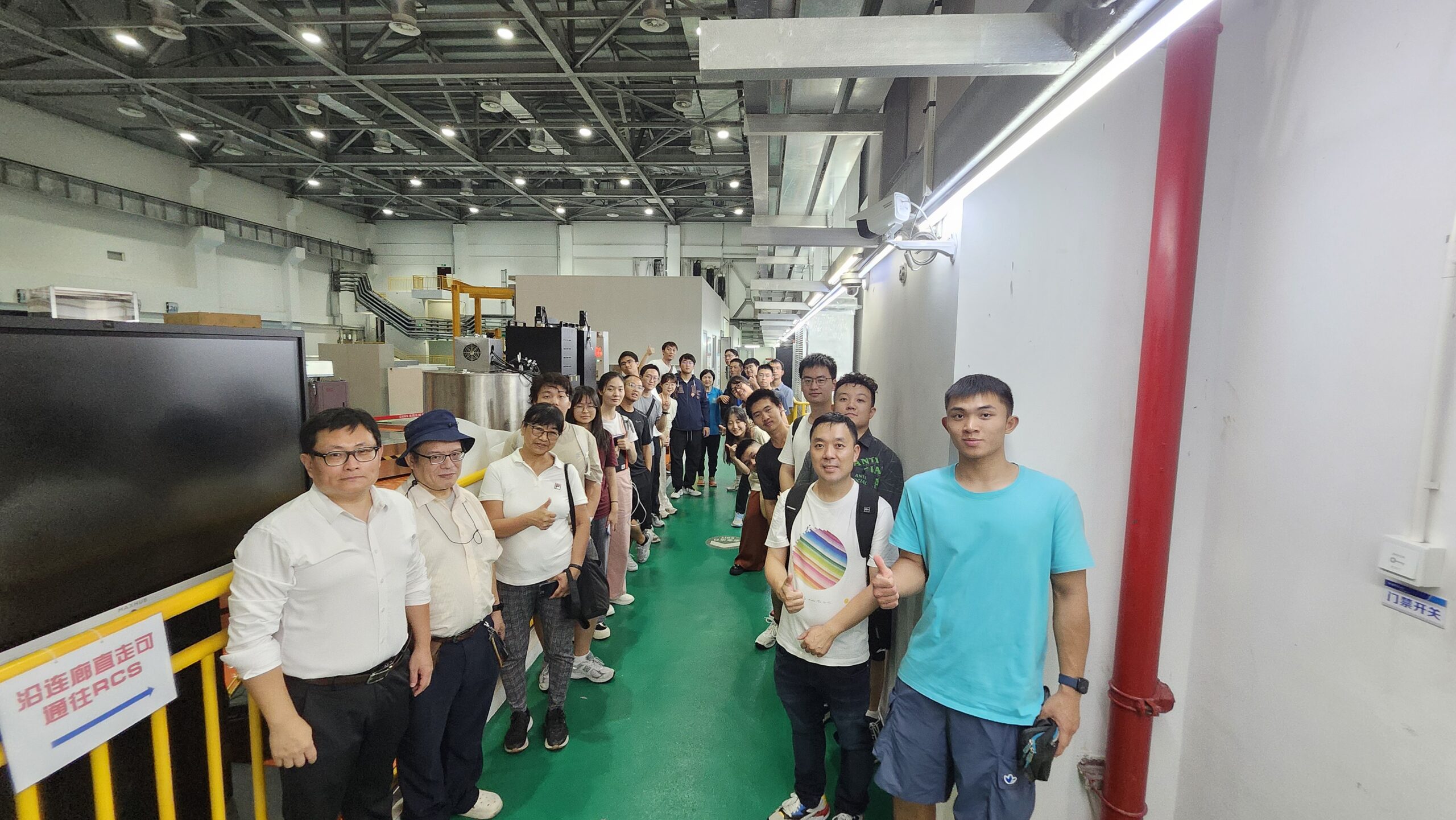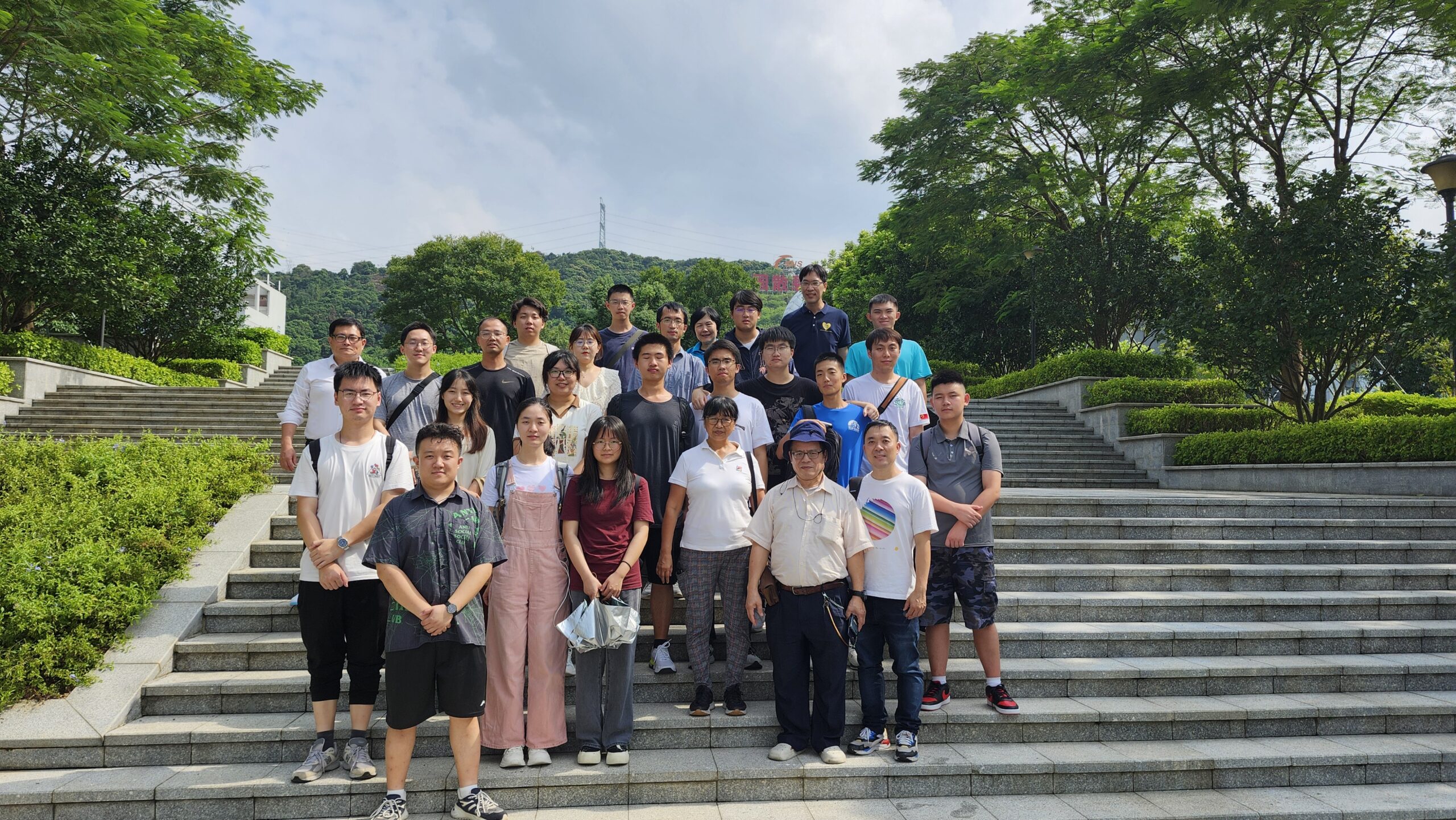On September 25, 2024, DPC successfully organized a scientific visit to the China Spallation Neutron Source (CSNS) in Dongguan, Guangdong Province, for students and staffs. This visit aimed to provide participants with firsthand exposure to cutting-edge scientific research.
The China Spallation Neutron Source (CSNS) is a large-scale scientific facility located in Dongguan, a city in the Greater Bay Area of Guangdong Province. It is the first pulsed neutron source facility ever built in a developing country. Currently, more than 400 scientists and engineers are collaborating in Dongguan on the CSNS project. The facility’s significance and pioneering status made it an ideal destination for this educational visit.
A group of staff and students, led by DPC staff members Professor Haifeng Li and Dr. Matthew Feng, successfully visited CSNS for a day. The group was warmly welcomed by Dr. Boyang Gu and Ms. Xiaoyin Mo from CSNS and first visited the CSNS exhibition hall. The exhibition hall displays the developmental history of the Institute of High Energy Physics (IHEP) of the Chinese Academy of Sciences(中國科學院高能物理研究所), which operates CSNS. Other large-scale scientific facilities managed by IHEP, such as the Jiangmen Underground Neutrino Observatory (JUNO) and the Large High Altitude Air Shower Observatory (LHAASO) in Daocheng, Sichuan, were also introduced in the hall, highlighting the rapid advancement of high-energy physics research in China. These exhibitions provided a comprehensive overview of China’s contributions to high-energy physics.
The group then visited the target station and beamline stations, where scientific experiments are conducted for various purposes and applications. The students and staff had the opportunity to observe the onsite equipment and engage in face-to-face discussions with the scientists at CSNS. They gained hands-on experience and an understanding of the principles and applications of neutron scattering technology. This direct interaction with cutting-edge technology and experts significantly enhanced their scientific understanding and appreciation.


